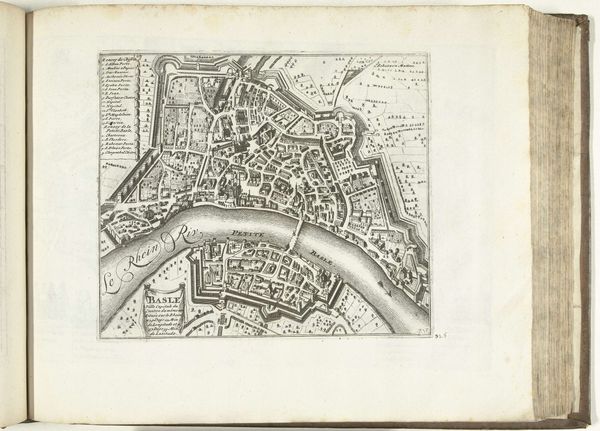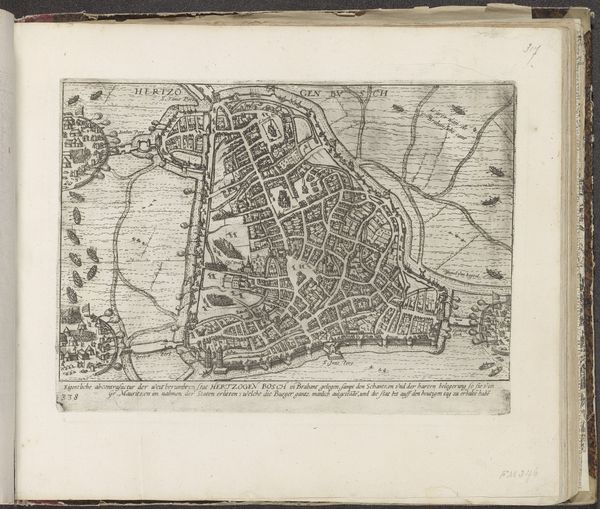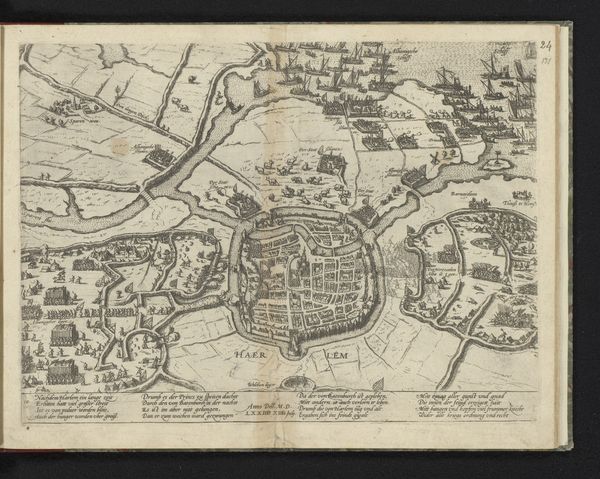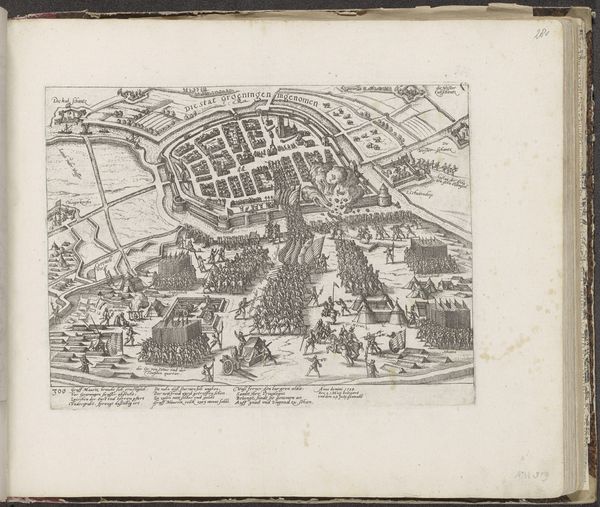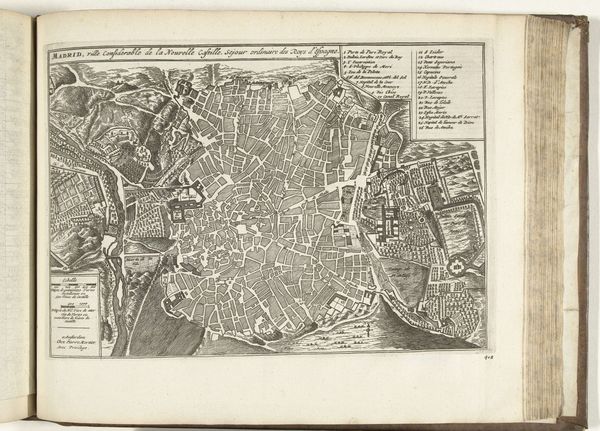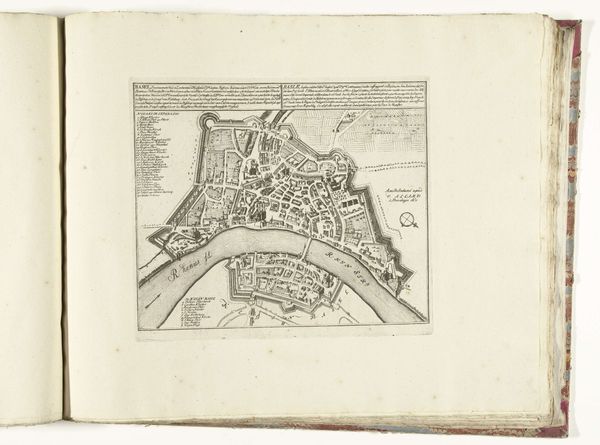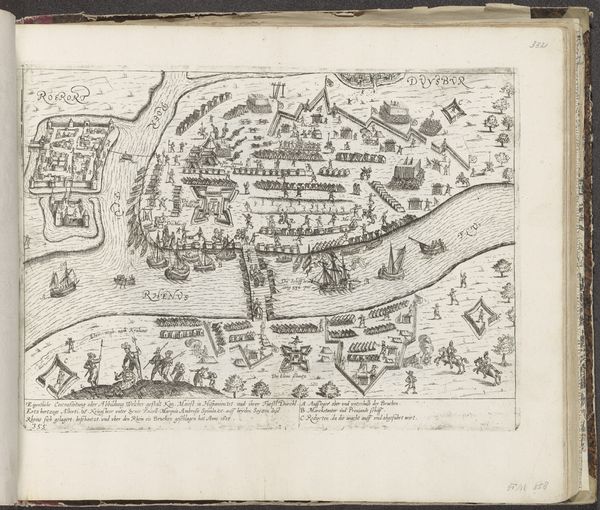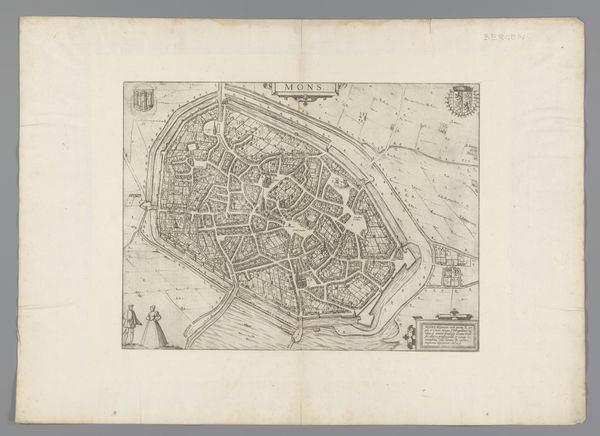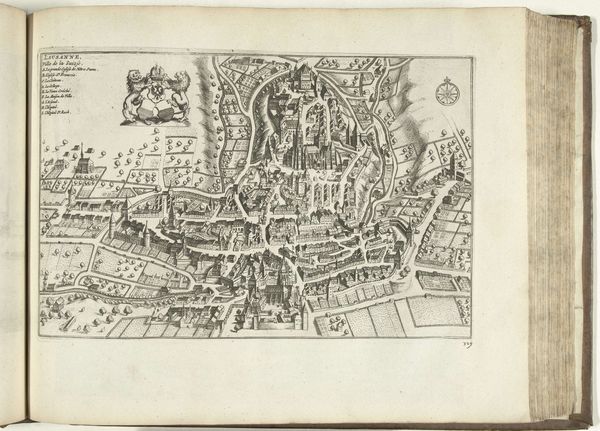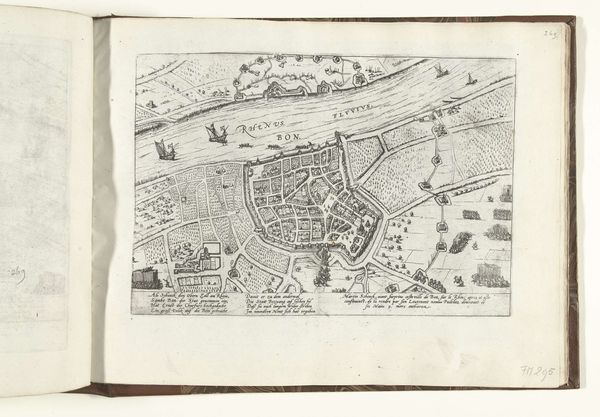
drawing, print, paper, ink, engraving
#
drawing
#
baroque
# print
#
paper
#
ink
#
cityscape
#
engraving
Dimensions: height 211 mm, width 236 mm
Copyright: Rijks Museum: Open Domain
Curator: Here we have a fascinating "Plattegrond van Basel" dating from around 1693 to 1696, currently held at the Rijksmuseum. It's a detailed city plan, rendered in ink on paper, using engraving techniques. What's your first take? Editor: It feels incredibly precise, almost obsessively so. Look at how the line work delineates the urban fabric; there is a striking formal arrangement dictated by the course of the river bisecting the composition. Curator: Indeed. Let's consider the materials themselves. Ink and paper were readily available, and the engraving process, while demanding specialized labor, was fairly established for mass production. Think about how these prints might have circulated: What kind of viewership was anticipated in the burgeoning print market? Was it simply a functional cartographic piece for merchants, or did it also act as a form of propaganda demonstrating Basel’s strength and order? Editor: A strong point. Yet it also allows one to concentrate solely on visual architecture—how forms interlock, how negative space articulates positive shapes, the deliberate play of dark and light achieved via controlled application. Curator: I think, too, that this formal rigor is tied to the city's social order. Basel at the time was a burgeoning trade center, a place where goods and ideas flowed, thus demanding precision to guarantee trade routes and establish order. Every aspect is related to the commercial environment from which it came and which, to a degree, it aimed to order. Editor: While I understand the economic drive as the foundation, the formal treatment goes further. Observe how all forms flow—buildings, pathways, all contributing into complex interrelations. The symmetry echoes throughout despite it reflecting asymmetry of urban terrain. A sophisticated visual language speaks independent from its mundane utility! Curator: I appreciate how the level of visual and technical detail points towards the society in which it was born, allowing one to visualize labor relationships through consumption practices—ultimately reflecting commercial transactions encoded in every street and edifice. Editor: And yet, divesting these from immediate needs and constraints releases an individual's contemplative faculties for visual composition. I see now why one has returned with keen attention into "Plattegrond van Basel". Curator: Seeing it as embedded in tangible human transactions gives deeper understanding. The piece takes more solid form beyond sheer shapes and angles when acknowledging socioeconomic considerations driving art production then consumption now and hereafter.
Comments
No comments
Be the first to comment and join the conversation on the ultimate creative platform.
